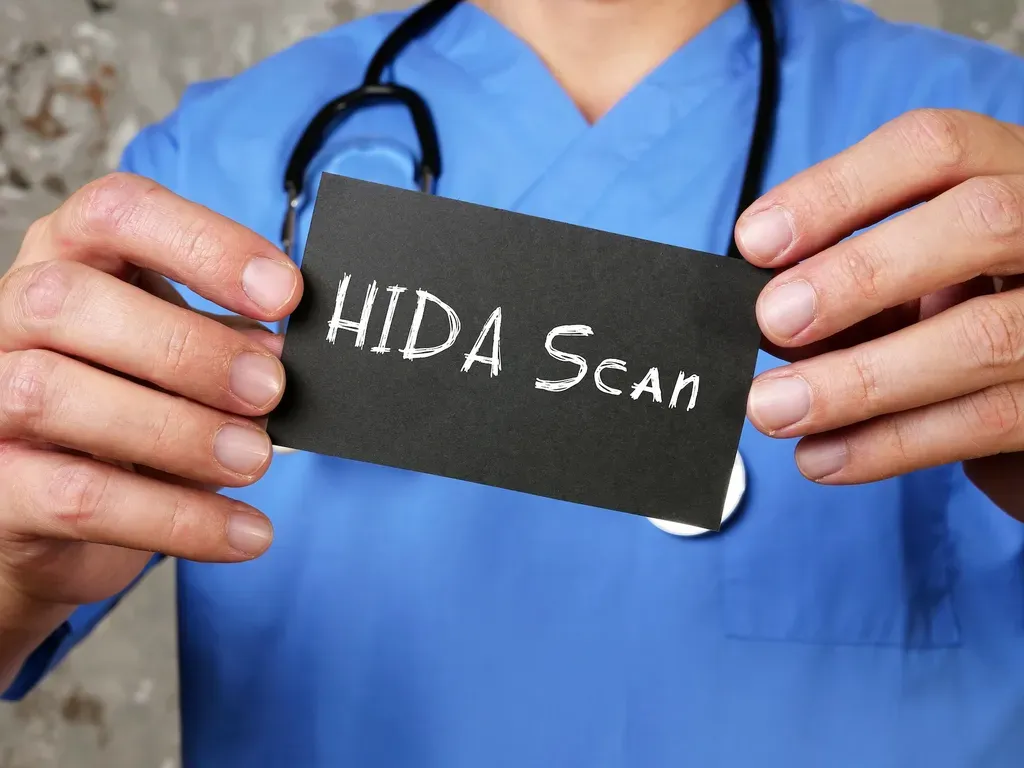
About HIDA Scan
Gallbladder radionuclide scan
Definition
Gallbladder radionuclide scan is a test that uses radioactive material to check gallbladder function. It is also used to look for bile duct blockage or leak.
How the Test is Performed
The health care provider will inject a radioactive chemical called a gamma emitting tracer into a vein. This material collects mostly in the liver. It will then flow with bile into the gallbladder and then the duodenum or small intestine.
For the test:
- You lie face up on a table under a scanner called a gamma camera. The scanner detects the rays being emitted from the tracer. A computer displays images of where the tracer is found in the organs.
- Images will be taken every 5 to 15 minutes. Most of the time, the test takes about 1 hour, but it can take up to four hours.
If the provider cannot see the gallbladder after certain amount of time, you may be given a small amount of morphine. This can help the radionuclide get into the gallbladder. The morphine may cause you to feel tired after the exam.
In some cases, you may be given a medicine during this test to see how well your gallbladder squeezes (contracts).
How to Prepare for the Test
You need to eat something within a day of the test. However, you must stop eating or drinking 4 hours before the test starts.
How the Test Will Feel
You will feel a sharp prick from the needle when the tracer is injected into the vein. The site may be sore after the injection. There is normally no pain during the scan.
Why the Test is Performed
This test is very good for detecting a sudden infection of the gallbladder or blockage of a bile duct. It is also helpful in determining whether there is rejection of a transplanted liver or a leak after the gallbladder has been surgically removed.
The test can also be used to detect long-term gallbladder problems.
What Abnormal Results Mean
Abnormal results may be due to:
- Abnormal anatomy of the bile system (biliary anomalies)
- Bile duct obstruction
- Bile leaks or abnormal ducts
- Cancer of the hepatobiliary system
- Gallbladder infection (cholecystitis)
- Gallstones
- Infection of the gallbladder, ducts, or liver
- Liver disease
- Transplant rejection (after liver transplant)
Risks
There is a small risk to pregnant or nursing mothers. Unless it is absolutely necessary, the scan will be delayed until you are no longer pregnant or nursing.
The amount of radiation is small (less than that of a regular x-ray). It is almost all gone from the body within 1 or 2 days. Your risk from radiation may increase if you have a lot of scans.
Considerations
Most of the time, this test is done only if a person has sudden pain that may be from gallbladder disease or gallstones. For this reason, some people may need urgent treatment based on the test results.
This test is combined with other imaging (such as CT or ultrasound). After the gallbladder scan, the person may be prepared for surgery, if needed.
Alternative Names
Radionuclide - gallbladder; Gallbladder scan; Biliary scan; Cholescintigraphy: HIDA; Hepatobiliary nuclear imaging scan